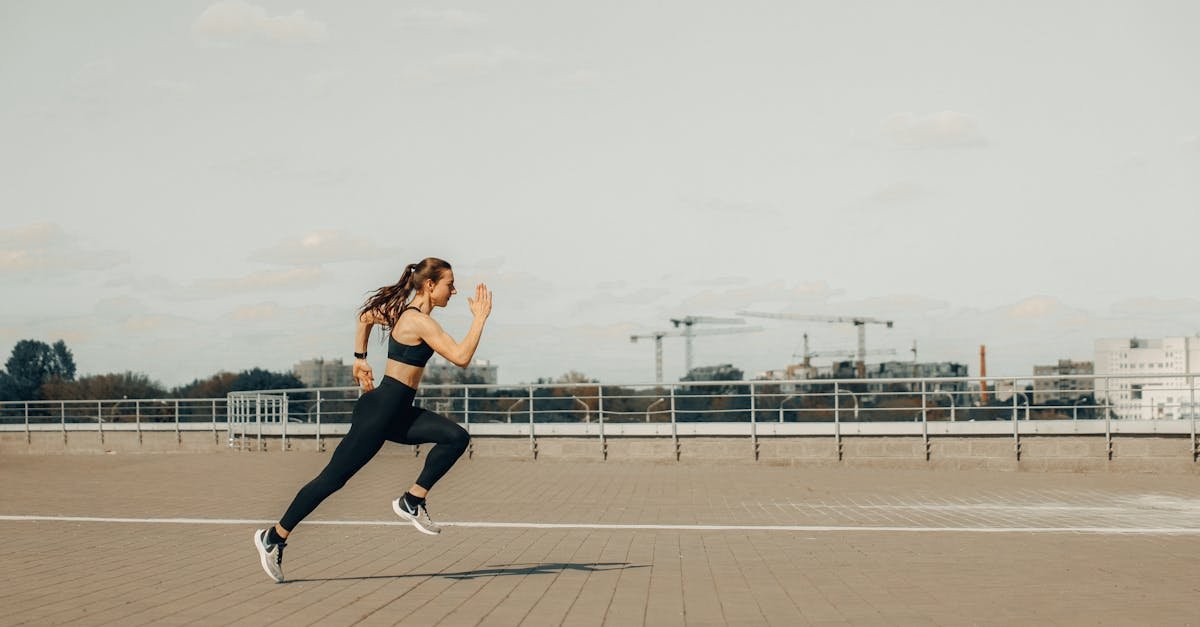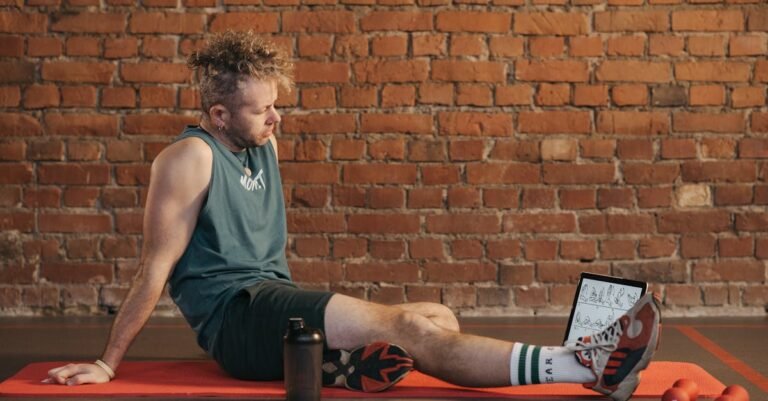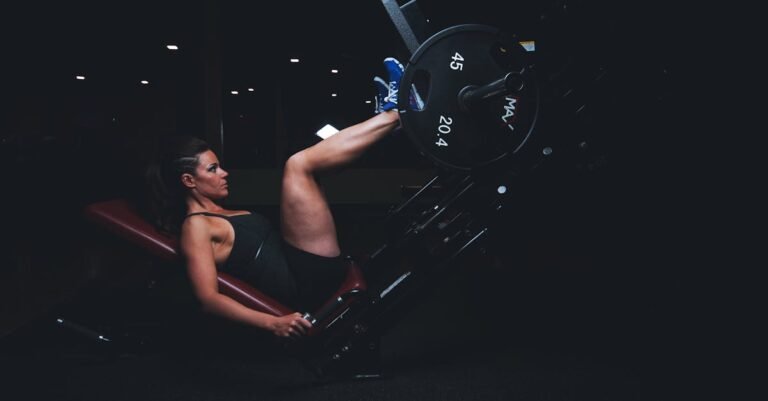Table of Contents
- Why Warming Up Before Every Workout Isn’t Just Optional, It’s Essential!
- Understanding the “Why”: The Science Behind Warming Up
- The Dangers of Skipping Your Warm-Up
- Types of Warm-Up Exercises: Finding What Works for You
- Crafting Your Perfect Pre-Workout Warm-Up Routine
- Sample Warm-Up Routines for Different Workouts
- Listen to Your Body: Customizing Your Warm-Up
- Conclusion: Make Warming Up a Non-Negotiable Habit
- Frequently Asked Questions (FAQs)
Why Warming Up Before Every Workout Isn’t Just Optional, It’s Essential!
Okay, let’s be honest. You’re strapped for time, eager to jump straight into the main event – the lifting, the running, the sweating. That five or ten minutes of warming up feels like… well, like a waste of precious workout time, right? We’ve all been there. You think, “I feel fine, I’ll just take the first set easy,” or “I’ll ease into my run.” But what if I told you that skipping your warm up is like trying to drive a car on a freezing morning without letting the engine warm up first? It might *work*, technically, but you’re risking damage and definitely not getting the best performance.
Warming up isn’t just some old school advice your PE teacher threw at you. It’s a crucial, science backed part of any effective and safe exercise routine. Think of it as laying the foundation before building the house. Without that solid base, things are much more likely to crumble. Seriously, taking those few extra minutes can be the difference between smashing your personal best and ending up sidelined with an injury. Ready to dive into why this often neglected step is your secret weapon for better, safer workouts? Let’s get into it!
Understanding the “Why”: The Science Behind Warming Up
So, what’s actually happening in your body during a warm up? It’s not just about feeling a bit warmer (though that’s part of it!). There’s some fascinating physiology at play that directly translates to better performance and reduced injury risk. It’s like turning on the lights and prepping the stage before the big show starts.
Preparing Your Muscles for Action
Imagine your muscles are like cold rubber bands. Try stretching a cold rubber band quickly, and what happens? Snap! Cold muscles are less pliable, stiffer, and more prone to tearing. A warm up gradually increases the temperature of your muscles. This increased temperature makes the muscle fibers, tendons, and ligaments more elastic and extensible. Think of it like warming up taffy – it becomes much easier to pull and shape without breaking.
This increased elasticity means your muscles can contract more forcefully and relax more quickly. They can handle a greater range of motion without straining. So, when you go for that deep squat or explosive jump, your warmed up muscles are ready to stretch and contract safely, rather than resisting and potentially tearing.
Boosting Blood Flow and Oxygen Delivery
When you start moving, your heart rate gradually increases. This isn’t just your heart working harder; it’s a signal to your entire circulatory system to kick into gear. Increased heart rate means more blood is pumped around your body, specifically directed towards the muscles you’re about to use intensely.
Why is this important? Blood is the delivery truck for oxygen and vital nutrients that your muscles desperately need to produce energy (ATP) during exercise. More blood flow equals a better, faster delivery service. Warming up essentially widens the “roads” (blood vessels, through vasodilation) leading to your muscles, allowing more oxygen rich blood to reach them. This improved oxygen supply helps delay fatigue and allows your muscles to work more efficiently for longer. It’s like ensuring the factory has all the raw materials it needs before starting a big production run.
Enhancing Mind-Muscle Connection
Exercise isn’t just a physical act; it’s neurological too. Your brain sends signals through your nerves to tell your muscles what to do. A warm up helps to wake up these neural pathways. As you perform gentle, controlled movements similar to those in your main workout, you’re essentially rehearsing the communication lines between your brain and muscles.
This improved neuromuscular activation means your movements become more coordinated, efficient, and powerful. Your body learns to recruit the right muscle fibers at the right time. Think of it as tuning an instrument before a concert – you’re ensuring every note (or muscle contraction) is precise and effective. This heightened connection not only boosts performance but also helps prevent jerky, uncoordinated movements that can lead to injury.
The Dangers of Skipping Your Warm-Up
Okay, we’ve talked about the good stuff. But what about the potential consequences of diving straight into your workout cold? It’s not just about missing out on benefits; you’re actively increasing your risk of negative outcomes. It’s like ignoring the warning signs before a storm hits – you might get lucky, but you’re playing with fire (or, more accurately, pulled muscles).
Increased Risk of Injury: Strains, Sprains, and Tears
This is the big one, isn’t it? As we discussed, cold muscles and connective tissues are stiff and brittle. Subjecting them suddenly to the high forces and rapid stretches involved in many exercises – whether it’s lifting heavy weights, sprinting, or making quick cuts in a sport – is a recipe for disaster.
Muscle strains (tears in muscle fibers), ligament sprains (stretching or tearing of ligaments that connect bones), and tendon injuries (like tendonitis or even ruptures) become significantly more likely. Your joints haven’t had a chance to produce adequate synovial fluid (the body’s natural lubricant), making them more susceptible to wear and tear too. Skipping the warm up is essentially gambling with your body’s integrity every single time you train.
Reduced Performance and Efficiency
Want to lift heavier, run faster, or jump higher? Then don’t skip your warm up! When your body isn’t properly prepared, it simply can’t perform at its peak. Your muscles won’t be able to contract as forcefully or quickly. Your reaction time might be slower. Your coordination could be off.
Think about it: if your muscles aren’t warm and pliable, and your neuromuscular pathways aren’t primed, how can you expect to generate maximum power or execute movements with precision? You’ll likely feel sluggish, less powerful, and fatigue more quickly because your body is working inefficiently, trying to play catch up while under duress. You end up fighting against your own unprepared body, limiting your potential during that workout session.
Post-Workout Soreness Overload
We all experience some level of delayed onset muscle soreness (DOMS) after a tough workout. It’s a normal part of the adaptation process. However, hitting cold muscles hard can exacerbate this soreness significantly.
When unprepared muscles are suddenly stressed, it can lead to more micro trauma within the muscle fibers than would occur if they were properly warmed up. While the exact mechanisms of DOMS are complex, introducing stress gradually via a warm up seems to mitigate the severity. Skipping it can lead to that “I can barely walk” feeling being much more intense and lasting longer than necessary, potentially impacting your ability to recover and train again soon.
Types of Warm-Up Exercises: Finding What Works for You
Alright, so you’re convinced warming up is important. But what exactly *should* you be doing? Hopping on the spot for 30 seconds? Holding a few stretches? The world of warm ups isn’t one size fits all, and understanding the different approaches is key to building an effective routine.
General vs. Specific Warm-Ups
Think of warm ups in two main categories:
- General Warm Up: This involves light cardiovascular activity and movements designed to increase your core body temperature and blood flow to all major muscle groups. Think 5-10 minutes of jogging, cycling, jumping jacks, or using an elliptical. The goal here is broad preparation.
- Specific Warm Up: This phase focuses on movements that mimic the actual exercises you’ll be performing in your workout, but at a lower intensity. If you’re going to squat, you might do bodyweight squats or squats with just the bar. If you’re playing basketball, you might do dribbling drills, light shooting, and defensive slides. This primes the specific muscles and movement patterns you’ll be using.
An ideal warm up often incorporates both: starting with general activity to raise body temperature and then moving into specific movements to prepare for the task at hand.
Dynamic Stretching: The Go-To Choice
Forget those old school static stretches you held for 30 seconds before PE class (we’ll get to those later). For a pre workout warm up, dynamic stretching is king. Dynamic stretches involve moving your muscles and joints through their full range of motion in a controlled but active way. Instead of holding a position, you’re constantly moving.
Why is this better before a workout? Dynamic stretching actively prepares your muscles for movement. It increases blood flow, raises muscle temperature, improves mobility, and activates the nervous system – all the things we want from a warm up! It essentially tells your body, “Get ready to move like this!”
Examples of Dynamic Stretches
Here are some classic dynamic stretches you can incorporate:
- Leg Swings (Forward/Backward and Side-to-Side): Stand tall, hold onto something for balance if needed, and swing one leg gently forward and backward, gradually increasing the range. Repeat, then switch legs. Do the same swinging the leg across your body and out to the side.
- Arm Circles (Forward and Backward): Stand with feet shoulder width apart, arms extended to the sides. Make small circles with your arms, gradually increasing the size. Do a set forwards and a set backwards.
- Torso Twists: Stand with feet slightly wider than shoulder width, arms bent or extended. Gently twist your torso from side to side, allowing your hips to move naturally.
- Walking Lunges (with or without twist): Step forward into a lunge position, keeping your core engaged and back straight. Push off the back foot and step directly into the next lunge. You can add a torso twist over the front leg for extra mobility.
- High Knees: Walk or jog lightly in place, bringing your knees up towards your chest.
- Butt Kicks: Walk or jog lightly in place or moving forward, bringing your heels up towards your glutes.
- Cat Cow Stretch: Start on your hands and knees. Inhale as you drop your belly towards the floor and look up (Cow). Exhale as you round your spine towards the ceiling, tucking your chin (Cat).
- Inchworms: Stand tall, then hinge at your hips and walk your hands out into a plank position. Keep your legs straight (or slightly bent if needed). Then, walk your feet towards your hands. Repeat.
Static Stretching: When (and When Not) to Do It
Static stretching involves holding a stretch in a fixed position for a period (typically 15-60 seconds). This is the type of stretching most people picture. While static stretching definitely has its place for improving flexibility, research suggests it’s generally not the best choice right before a workout, especially one involving strength or power.
Why? Holding a static stretch can temporarily decrease muscle strength and power output. It signals the muscle to relax and lengthen, which is the opposite of what you want right before you need it to contract forcefully. Think of it like over stretching that rubber band before you need it to snap back powerfully.
So, when should you do static stretching? It’s much more beneficial after your workout during the cool down phase, or as a separate flexibility session altogether. When your muscles are already warm and pliable post exercise, static stretching can help improve long term flexibility and potentially reduce muscle tightness.
Crafting Your Perfect Pre-Workout Warm-Up Routine
Now that you understand the why and the what, let’s put it all together. How do you build a warm up routine that actually works for you and your specific workout? It’s not about just randomly doing a few movements; it’s about being intentional.
How Long Should a Warm-Up Be?
There’s no single magic number, but a good rule of thumb is 5 to 15 minutes. The ideal duration depends on several factors:
- Workout Intensity: A very high intensity workout (like heavy lifting or sprinting) generally requires a longer, more thorough warm up than a low intensity one (like a brisk walk).
- Time of Day/Temperature: If you’re working out first thing in the morning or in a cold environment, your body will naturally take longer to warm up. You might need closer to the 15 minute mark.
- Your Fitness Level: Beginners might start with shorter warm ups, while more advanced athletes might need longer, more specific preparation.
- What You’re Doing: A full body workout might require a slightly longer warm up than one focusing on just one or two muscle groups.
The key is to warm up until you feel ready. You should feel slightly warmer, maybe have broken a light sweat (but not be fatigued), and feel that your joints and muscles are moving more freely.
Components of an Effective Warm-Up
A well rounded warm up typically progresses through these stages:
Light Cardio (Getting the Heart Pumping)
Duration: 3-5 minutes
Goal: Increase heart rate, breathing rate, core body temperature, and overall blood flow.
Examples: Jogging, brisk walking (especially on an incline), cycling on a stationary bike, using an elliptical or rower, jumping jacks, skipping rope. Keep the intensity low to moderate – you should be able to hold a conversation.
Dynamic Movements (Activating Key Muscle Groups)
Duration: 3-7 minutes
Goal: Improve mobility, activate muscles and joints through their full range of motion, and enhance neuromuscular coordination. Focus on movements that target the areas you’ll be working.
Examples: Choose 4-6 dynamic stretches like leg swings, arm circles, torso twists, walking lunges, cat cow, inchworms, high knees, butt kicks. Perform each for about 30 seconds or 10-15 repetitions.
Workout-Specific Drills (Priming for Performance)
Duration: 2-5 minutes
Goal: Rehearse the specific movement patterns of your main workout at a lower intensity to prepare the exact muscles and neural pathways.
Examples:
- For Strength Training: Perform 1-2 light sets of your main exercises (e.g., bodyweight squats before weighted squats, push ups before bench press, band pull aparts before rows).
- For Running: Include drills like A skips, B skips, high knees, butt kicks, and short, easy strides (accelerations).
- For Sports: Practice sport specific movements like dribbling, shooting (basketball), throwing (baseball), light agility ladder drills, or specific footwork patterns.
This phase bridges the gap between your general preparation and the demands of your actual workout, ensuring your body is truly ready for action.
Sample Warm-Up Routines for Different Workouts
Need some concrete examples? Let’s map out a few sample warm up routines tailored to common types of workouts. Remember to adjust these based on your own needs and how you feel!
Warm-Up for Running/Cardio (Approx. 10 minutes)
- Light Cardio (3-5 minutes): Start with a brisk walk, gradually increasing to a very easy jog. Focus on relaxed breathing.
- Dynamic Stretches (4-5 minutes):
- Leg Swings (Forward/Backward): 10-12 reps per leg
- Leg Swings (Side-to-Side): 10-12 reps per leg
- Walking Lunges: 10 reps per leg
- High Knees (walking or jogging): 30 seconds
- Butt Kicks (walking or jogging): 30 seconds
- Ankle Circles: 10 circles each way, each foot
- Torso Twists: 15-20 reps total
- Specific Drills (1-2 minutes): Perform a few short (30-50 meter) strides or accelerations at about 60-70% of your sprint speed, focusing on good form. Walk back to recover between each.
Warm-Up for Strength Training (Full Body) (Approx. 12-15 minutes)
- Light Cardio (5 minutes): Choose your favorite: rowing machine, stationary bike, elliptical, or light jogging. Get slightly warm.
- Dynamic Stretches (5-7 minutes):
- Cat Cow: 10-12 cycles
- Thoracic Spine Windmills (lying on side): 8-10 reps per side
- Inchworms: 5-8 reps
- Bodyweight Squats: 15-20 reps (focus on depth and form)
- Arm Circles (Forward/Backward): 10-15 reps each way
- Walking Lunges with Torso Twist: 8-10 reps per leg
- Band Pull Aparts or Shoulder Dislocations: 15-20 reps (activates upper back/shoulders)
- Specific Activation/Light Sets (3-5 minutes): Perform 1-2 very light sets of your first 1-2 exercises. For example:
- Before Squats: Empty barbell squats or goblet squats with a light weight.
- Before Bench Press: Push ups or empty barbell bench press.
- Before Deadlifts: Glute bridges or light kettlebell swings.
Warm-Up for Sports/Agility Training (Approx. 15 minutes)
- Light Cardio (5 minutes): Light jogging around the court/field, incorporating shuffling, skipping, and carioca (grapevine steps).
- Dynamic Stretches (5-7 minutes): Focus on multi directional movements.
- Leg Swings (All directions): 10-12 reps per leg/direction
- Walking Knee Hugs: 10 reps per leg
- Walking Quad Stretch (grabbing ankle): 10 reps per leg
- Spiderman Lunge with Thoracic Rotation: 5-6 reps per side
- High Knees & Butt Kicks (moving forward): 15-20 meters each
- Lateral Lunges: 8-10 reps per side
- Arm Circles & Torso Twists
- Agility/Specific Drills (3-5 minutes):
- Agility Ladder Drills (various patterns)
- Cone Drills (shuffling, sprinting between cones)
- Light plyometrics (e.g., pogos, short box jumps)
- Sport specific handling/movement drills (e.g., dribbling, passing, light throwing/catching)
Listen to Your Body: Customizing Your Warm-Up
While these templates provide a great starting point, the absolute best warm up is one that’s tailored to you on that specific day. Our bodies aren’t machines; how we feel can change daily based on sleep, stress, previous workouts, and more.
Pay attention to the signals your body sends. Do certain areas feel particularly tight? Spend a little extra time mobilizing them with relevant dynamic stretches. Are you feeling unusually sluggish? Maybe extend the light cardio phase by a minute or two. Did you have a hard leg workout yesterday? Focus more on upper body mobility today if that’s your focus.
Don’t just go through the motions. Use the warm up as a diagnostic tool. Check in with your joints – how are the ankles, knees, hips, shoulders feeling as they move? Notice any restrictions or discomfort. This awareness not only helps you warm up more effectively but can also alert you to potential issues before they become injuries during the main workout. Flexibility is key – not just in your muscles, but in your approach to warming up!
Conclusion: Make Warming Up a Non-Negotiable Habit
So, there you have it. Warming up is far from a waste of time; it’s an investment in your performance, your safety, and your long term fitness journey. By gradually increasing your body temperature, boosting blood flow, activating your muscles, and priming your nervous system, you set the stage for a more effective, efficient, and enjoyable workout. Skipping it? Well, that’s like willingly increasing your chances of hitting a pothole – you might get away with it sometimes, but eventually, it’s likely to cause problems.
Think of those 5-15 minutes not as time *taken away* from your workout, but as time *added* to your potential and your physical resilience. Integrate dynamic stretching, some light cardio, and workout specific movements into your routine. Listen to your body, adapt as needed, and make warming up a consistent, non negotiable part of every single workout. Your muscles, joints, and future self will thank you!
Frequently Asked Questions (FAQs)
FAQ 1: Can I just do a few jumping jacks and call it a warm up?
While jumping jacks certainly get your heart rate up (part of the general warm up), they likely aren’t sufficient on their own, especially before strength training or sports. A good warm up also includes dynamic stretching to mobilize joints and activate specific muscle groups, and potentially some workout specific movements. Jumping jacks are a good start for the cardio component, but don’t neglect the mobility and activation parts!
FAQ 2: Is static stretching before a workout really bad?
It’s not necessarily “bad” in the sense of causing immediate harm for most people, but research suggests it’s generally not *optimal* right before activities requiring strength, speed, or power. Holding static stretches can temporarily decrease muscle force production and may slightly increase injury risk if done aggressively on cold muscles. Dynamic stretching is widely considered superior for pre workout preparation. Save the longer static holds for your cool down or separate flexibility sessions.
FAQ 3: How do I know if I’ve warmed up enough?
Listen to your body! Good indicators include: a slightly elevated heart rate, feeling physically warmer (you might have broken a light sweat), joints moving more freely without stiffness, and feeling mentally focused and ready for the workout ahead. You shouldn’t feel fatigued from the warm up itself; it should leave you feeling energized and prepared, not tired.
FAQ 4: Should my warm up make me sweat?
Breaking a light sweat is often a good sign that your core body temperature has increased, which is one of the primary goals of a warm up. However, it’s not an absolute requirement, especially in colder environments or for lower intensity workouts. The amount you sweat varies greatly between individuals. Focus more on feeling warmer, looser, and more mobile rather than solely on whether or not you’re sweating.
FAQ 5: What’s the difference between a warm up and a cool down?
They serve opposite purposes! A warm up prepares your body for exercise by gradually increasing intensity, heart rate, blood flow, and muscle temperature using light cardio and dynamic movements. A cool down helps your body transition back to a resting state *after* exercise by gradually decreasing intensity, often incorporating static stretching to improve flexibility and potentially aid recovery. Warm up = prepare for stress; Cool down = recover from stress.










